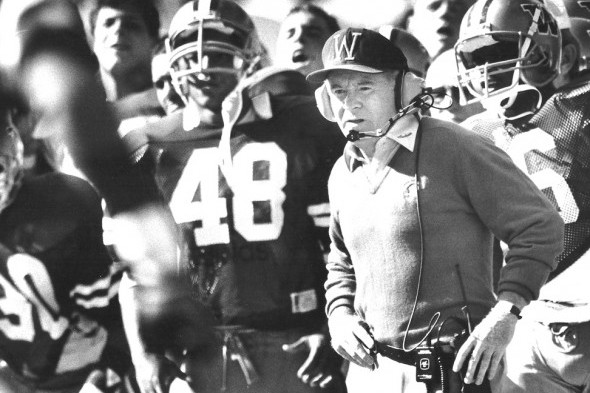
By David Eskenazi and Steve Rudman
Former University of Washington football coach Don James (1974-92), who directed the Huskies to six Rose Bowl appearances and the 1991 co-national championship, left a Seattle-area hospital a week ago following two surgeries to rectify gastrointestinal issues. According to a statement released by the school on behalf of the James family, doctors believe the surgeries were successful.
Now 80, James is not only the most successful head coach in UW’s 124-year football history, he created expectations for the program that are inconsistent with the historical reality. Because of James, many fans, particularly younger ones, believe it is their birthright to watch dominant Husky teams year after year. But even James never believed that.
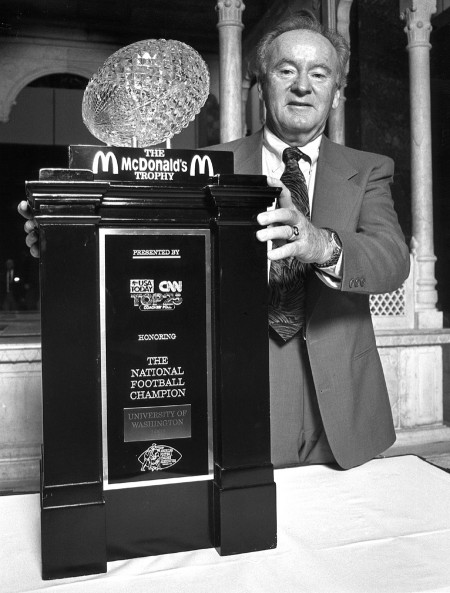
The NCAA credits Washington with 675 football victories (start of 2013 season), although the number is unofficially not that high. Subtract the 41 high school, athletic club, service and jayvee teams UW defeated between 1889-1920, and 675 wins drops to 634 – less when practice games, which the NCAA years ago grandfathered in as wins, are omitted.
But for argument’s sake, let’s stick with 675. Fifty-eight came during Gil Dobie’s run as head coach (1908-16), 63 more occurred during Enoch Bagshaw’s tenure (1921-29), and James recorded 153. Thus, 32.7 percent (221) of Washington’s 675 victories occurred in the 35 seasons coached by Dobie, Bagshaw and James, leaving the other 441 spread out over 89 years, or 4.9 per year.
Since the formation of the Pacific Coast Conference in 1916, Washington has a first-place finish in its league (PCC, AAWU, Pac-8/10/12) 12 times. Dobie, Bagshaw and James had eight of the 12. Washington has had 33 bowl teams. Bagshaw and James coached 16, 14 by James.
James defeated a Top 20 opponent (Associated Press poll) 34 times, the same total as all of Washington’s other post-World War II coaches (Ralph Welsh, Howie Odell, John Cherberg, Darrell Royal, Owens, Jim Lambright, Rick Neuheisel, Keith Gilbertson, Tyrone Willingham and Steve Sarkisian) combined.
Since 1936, Washington has been ranked 22 times in the final Associated Press poll. Eleven belonged to James, who won 153 games in 18 years. Washington’s five coaches since James have won 122 in a combined 21 seasons.
Take James out of the equation and Washington, especially post-World War II Washington, has marginal bragging rights. Since 1947, James is responsible for 41.2 percent of the wins, 56 percent of the bowl teams, 50 percent of the ranked teams, 66.6 percent of the conference titles and the only national championship.

When James arrived (Dec. 23, 1974), a surprise pick by athletic director Joe Kearney, the program was in a gathering eclipse. The school hadn’t had a bowl team since 1964 and public interest had waned, attendance having dropped from an average of 59,531 during the height of the Sonny Sixkiller era (1971) to 51,250 for the last year of Jim Owens (1974).
In fact, James was a distant third choice. But athletic director Joe Kearney saw something special in James, then the head coach at Kent State.
Husky fans did not initially throw their support behind James. After coaching Owens holdovers to a 6-5 record in 1975, average attendance plunged to 42,595 during the 1976 season.
By 1977, James had not only not won anybody over to his style of I-formation football, he also had a quarterback controversy on his hands. An overwhelming majority of fans supported local product Chris Rowland over Los Angeles junior college transfer Warren Moon. The crux of it: white vs. black.
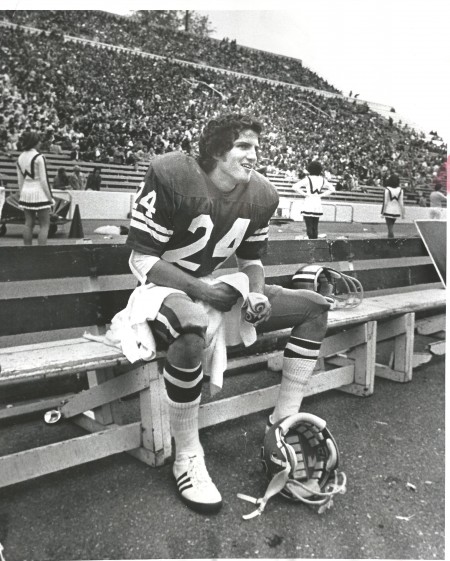
James largely stuck with Moon. But a 1-3 start, which featured an opening-game pratfall to Mississippi State at home and road losses at Syracuse and Minnesota, prompted several Owens holdovers to publicly question the manner in which Don James era was going – or not going.
Husky insiders found it difficult to get a read on him. They were acquainted with his resume — head coach at Kent State, stints as an assistant at Florida State, Colorado and Michigan before that. But his coaching methods were nothing like those of Owens, whose hands-on style had become familiar.
While his assistant instructed, cajoled and barked in players’ faces, James stood silently on a scaffold 15 feet above the AstroTurf at Husky Stadium, absorbing the panorama of practice below.
“I’ll never forget my first day of practice,” former quarterback Tim Cowan said in an interview in connection with Washington’s football centennial in 1989. “I looked around, wondering where he was, and then I saw him up in that tower. I wondered what he was doing up there. But I came to find out that he was always in such constant control of things that it blew my mind. It seemed like he never missed anything.
“As I matured, my respect for him was even greater because he was a guy who came into a situation and turned the program completely around. He had a plan and he followed it out methodically.”
James had a different approach than most of his predecessors, preferring to keep his players at a distance.
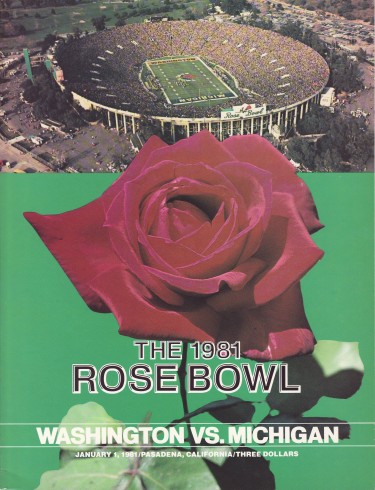
“You didn’t get to know him personally,” Joe Steele said, also in an interview published on the occasion of Washington’s centennial. “You played for him and had a tremendous amount of respect for him. He’d walk into a room and the whole place would go silent. But from a closeness standpoint, you didn’t get that.”
James’ assistants did the teaching, talking and hands-on stuff, and James taught and talked to them. As a result, hundreds of players passed through the program stealing glances at James in his tower, wondering what he was really like. They ultimately became part of the greatest renaissance in Washington football history, but they never got to know the man responsible for orchestrating it.
“I think he did it on purpose,” said former All-America placekicker Chuck Nelson, also interviewed in connection with Washington’s centennial. “He liked to keep his distance. I think it must have made his decisions easier because there weren’t personalities involved. He distanced himself so he could be more objective.”
Former James assistant Skip Hall, later the head coach at Boise State, put it this way: “Don was the overseer. He felt he could do more from up above in the tower. And believe me, he got it all. At every coaches’ meeting he’d have notes about everything that went wrong. It was incredible that one person could see it all.”
James is most celebrated for his six Rose Bowl teams and co-national championship, but two largely forgotten games, one a victory, the other a loss, provided the fuel for the entire James era. Without the two, well, perhaps the James era wouldn’t have unfolded in the manner it did.
The first occurred Oct. 8, 1977 after the Huskies stumbled to a 1-3 start. Prior to their matchup with Oregon in Eugene that day, James did something out of character: he approached each of his players, encouraging all to have a good game.

“We went out and rolled,” Steele recalled. “We came together as a group. And from then on, he came around to every player before the game and said the same thing.”
Washington’s 54-0 win launched a run of seven wins in eight games, concluding with a 28-20 victory over Michigan in the Rose Bowl. The Rose Bowl victory became worth much more than momentary pride. James parlayed it into a recruiting bonanza, his signees forming the nucleus of teams that played in a Sun, two Rose and two Aloha Bowls between 1979-83.
Despite two losses in a 10-2 season, the 1982 team may have been James’ best in that run. Ranked No. 1 for seven consecutive weeks by The Associated Press, the Huskies couldn’t overcome John Elway at Stanford Oct. 30 and lost a shocker in the Apple Cup 24-20, missing a third Rose Bowl trip in three years.
Twelve Huskies went in the NFL draft from the 1982 senior class, the same number that went following Washington’s co-national title in 1991. Despite the personnel losses, James had the Huskies back in contention for a national championship in 1984 when the team started 9-0, stumbled at USC 16-7, and accepted a bid to the Orange Bowl as consolation for missing another Rose Bowl opportunity.
Losing the conference title at USC provided James a real chance to win the national championship in Miami, and the Huskies seized it, beating No. 2 Oklahoma 28-17 in the famous Sooner Schooner game. UW finished No. 2 in both national polls only because Brigham Young went 13-0 and voters decided they couldn’t ignore a perfect season.
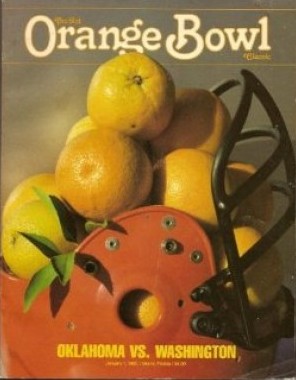
By the standards James established, the Huskies had disappointing years in 1985 (7-5-0, Freedom Bowl) and 1986 (8-3-1, Sun Bowl), but the Sun Bowl loss to Alabama became a program changer for James, who saw something happen in El Paso that he hadn’t seen happen to any of his teams.
Prior to the 28-6 loss to Alabama, Washington won 10 games four times in the previous decade, averaging 8.5 wins over that span. James amassed that record by owning the Northwest in recruiting, making recruiting inroads into California and coaching those players “up,” and pulling off wins against more talented teams by dominating specials play and winning turnover battles.
In Alabama, James encountered an enemy he couldn’t out-coach: the Tide’s team speed. Alabama’s athletes, including Cornelius Bennett and Bobby Humphrey, left the Huskies incapable of competing, which convinced James he needed to recruit a different kind of athlete (best example was Napoleon Kaufman) if he was going to maintain what he built.
The course change didn’t manifest itself until 1989, after Washington had been reduced to buying its way into the 1987 Independence Bowl in Shreveport, AL., in order to keep its postseason streak alive, and going bowl-less in 1988 with a 6-5 record.
That year, the Huskies finished 8-4, returned to the polls for a three-week run and ended the campaign by holding Emmett Smith to 17 yards in a 34-7 Freedom Bowl win over Florida.
By 1990, the Huskies were back on top, winning the Pac-10 title and Rose Bowl (46-34 over Iowa) with an offense featuring quarterback Mark Brunell and tailback Greg Lewis. With Steve Emtman winning the Outland Trophy and Lombardi Award, they sealed the deal in 1991, outscoring 12 opponents 495-115.
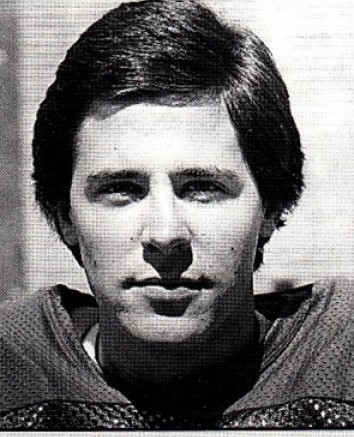
The coach of Washington’s first national championship football team grew up in Massillon, OH., born Dec. 31, 1932, and played quarterback and defensive back on two state championship teams at Washington High School. Later, at the University of Miami, he set a slew of passing records before marrying Carol, his high school flame, and embarking on a coaching career following a stint in the service.
During the celebration many years later of Washington’s centennial many years later, James recalled that he absorbed lessons in organization and structure, the keys to his success, while playing at Washington High.
“I was in one of the best high school programs in America,” James said. “It was very structured with a lot of emphasis on fitness, a good, year-around concept. My coaches were the kind of people I wanted to be like.”
James absorbed ideas, philosophies, concepts at every coaching stop, learning from Bill Peterson at Florida State, Eddie Crowder at Colorado and Bump Elliott at Michigan. He worked for men who had learned from Bear Bryant and Paul Dietzel, both Hall of Famers. After so many years coaching the Huskies, it became easy to forget what a splendid defensive coordinator James had once been.
At Florida State, for example, the Seminoles posted 13 shutouts in four years, held three teams to a field goal and 14 others to a single touchdown.
“You learn from a lot of people,” James said, “and then when you hire good coaches you get a lot of good ideas.”
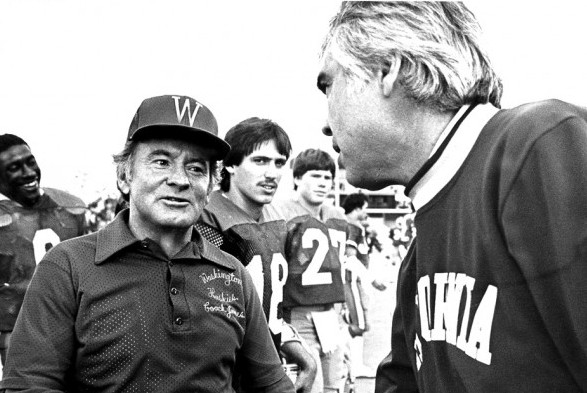
The changeover from Owens to James was difficult for some players — and some coaches – to handle. Not only was James nothing like Owens in terms of style, disposition and approach, his system was so structured and detailed that it made a military operation seem haphazard. James meticulously plotted out games and practices, minute by minute, so there would be no surprises.
James was so organized that when he met the media on Monday mornings during football season, he had already scripted out on a yellow legal pad every point he intended to make. Seasoned reporters speculated that James even anticipated all questions they might ask, and wrote down his responses.
“His organization was unbelievable,” Nelson recalled. “I sat behind him on a bus once on the way to Oregon. He was studying situations – down and distance, points ahead and points behind, time remaining in the game and what his decision would be as far as whether we would punt, go for it, try a field goal, or whatever. So when it came time to make a decision, the decision would not be based on emotion. I always thought that nothing ever surprised him.”

In 1983, a Washington-Michigan game at Husky Stadium came down to this: The Huskies trailed 24-23 after scoring a touchdown with less than a minute remaining. James immediately called for a two-point conversion attempt, which was good, giving UW a 25-24 win.
James made the decision to go for two not after the UW touchdown, but months before in a planning meeting devoted to what to do in certain situations. Had Washington played a conference opponent, James would have settled for the tie. Since it was a non-conference foe, he went for the win.
Skip Hall kept journals of James practices for more than 10 years.
“Every single minute of every practice was accounted for,” Hall said. “The one thing Don would do before each practice was listen to each assistant. He’d go right down the line and fill in a chart showing who would be doing what during each segment. Every minute was utilized to the fullest.
“That first year (1975) we beat both USC and UCLA, which we had no business doing. A lot of it had to do with practice organization. Even at Kent State it was the same thing. I remember that every minute seemed to be carefully laid out with each coach deciding what the need for the day was. And then everything was written up. We wrote up everything – our recruiting stuff, our procedures for the off-season program. We used to joke about how much we wrote down. But everybody knew what was expected.
“What Don always did was take any guesswork or waste of time out of the system. He was very efficient with time. We had meticulous organization and planning. We criticized everything, and we used those critiques to get better. The thoroughness was incredible. Everything was played out ahead of time. There was a plan for the coin toss, whether we’d elect to kickoff or receive or defend a certain goal. The other thing Don did was he hired good people. He had a good plan and he managed people well. He had the ability to motivate and get the most out of people.”
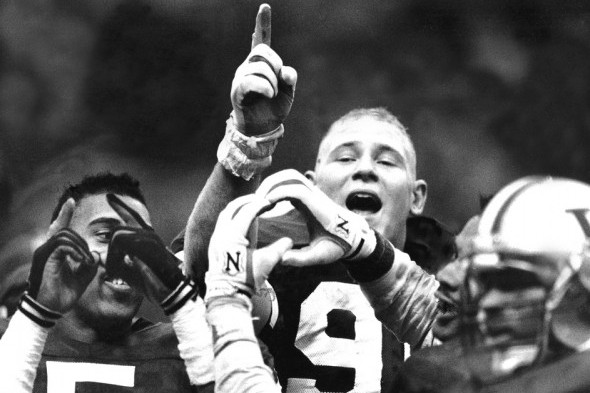
As the James era drew to a close, James mellowed some in his relations with players, but never got lax with the structure he had implemented. He also adapted when he needed to, changing his entire offensive philosophy and approach to recruiting during his tenure.
While the end was messy, what with the Billy Joe Hobert scandal plus NCAA and Pac-10 sanctions that convinced James to resign in August, 1993, his legacy is clear: He not only created huge expectations in the Washington fan base, he did so by actually exceeding his own.
“When I came to Washington,” James said in 1985, “I had a belief that we would have a quality program. But I didn’t think that within the conference we would ever be able to overtake USC. My hope was that we could get to a point where we could be close to them and, on a given day, be good enough to beat them. My original idea was that we would probably be able to compete for a title and bowl game about once every three years. I figured that given quality in our league, we would have a couple of lean years and have to rebuild again.”
Washington fans frequently said that, instead, James merely reloaded.
No telling what might have happened if James hadn’t resigned to protest conference sanctions. He did not have to deal with the subsequent spreading of athletic wealth that gave rise to the likes of Boise State and placed all programs on more equal footing. Nor did he have to compete against Phil Knight’s money at Oregon.
But he excelled in the environment and against the competition he faced, building a far better program than Washington fans really had a right to expect.
——————————————
Many of the historic images published on Sportspress Northwest are provided by resident Northwest sports history aficionado David Eskenazi. Check out David’s Wayback Machine Archive. David can be reached at (206) 441-1900, or at seattlesportshistory@gmail.com

9 Comments
Such a great ride during the James era. The players, the coaches. Can’t wait to revisit that. Program’s looking like it’s on track right now.
I hope that is true. I would like the UofO /Washington game to be more than the yawn it has been since the 90s.
You mean since 2004?
14 wins, three losses dating back to 1994
It’s too bad the UW administration–AD and UW President–were jealous of DJ’s success.
My first reaction on seeing the Dawgfather as the topic for Wayback Machine: “damn! I must be getting old.”
I sure hear that!!
Excuse me, but Oregon was kicking the stuffings out of Washington before Phil Knight’s money became a factor. Snark is one thing, but get your facts straight when you ladle it out. I was always a James admirer, but his legendary distance from his players also led to the scandals that brought him down. Booster payoffs to players have always been endemic at Washington. That is why the famous Hugh MacEnhenny joked that he couldn’t afford to graduate and go pro.
I can’t begin to tell you how misguided you are, so I won’t even try.
Steve —
You sucker-punch Jonathan Swift, then quickly skulk away without even offering him a cogent response? Since you feel he’s so misguided, why not at least address whatever it is about his comments — that seemed quite benign to me — that bother you so? Your strangely dismissive attitude could even make me think twice about continuing monetary contributions to your site.
JSwift’s allusions about convincing UO victories over UW, pre-Knight, are correct; 1971, 1973 and 1980 are still particularly memorable. In addition, there have been lots skin-of-the-teeth UW wins along the way that show this series has been incredibly competitive ever since I began watching the two teams duke it out in 1959. And, of course, the Ducks’ recent dominance vs. UW that JSwift referenced should be known to all here in the region. Maybe this year, things will finally swing the other direction.
What a lot of my fellow Husky fans may have forgotten about Phil Knight is that he and the UO Athletics Dept. had a very chilly relationship in the past. Although Knight and his wife had long been generous contributors to UO as a whole, it wasn’t until Bill Moos arrived on the scene as their athletics director that Knight was convinced to get on board with UO athletics in a big way. And let’s be sure not to forget all the other college sports teams throughout America — including those of women — who are more than happy to benefit from his largesse.